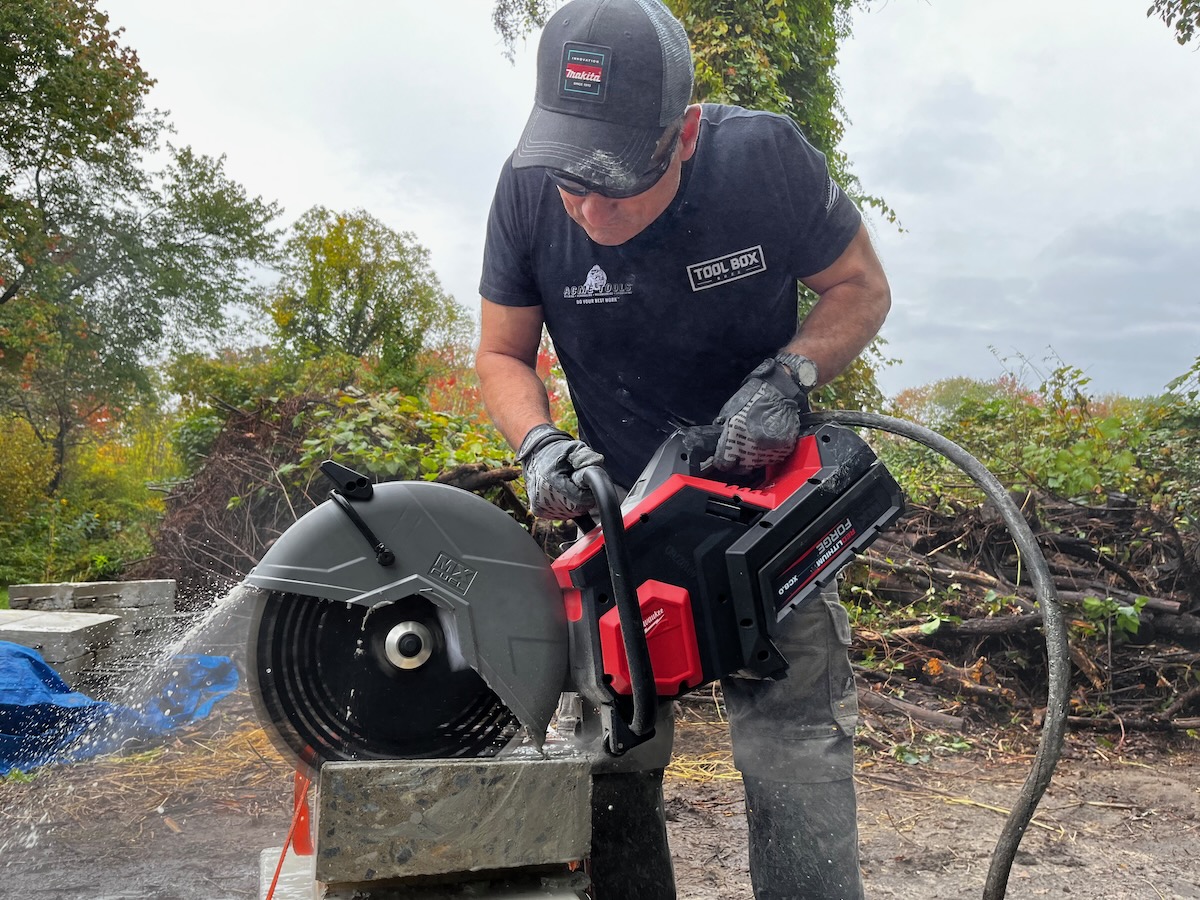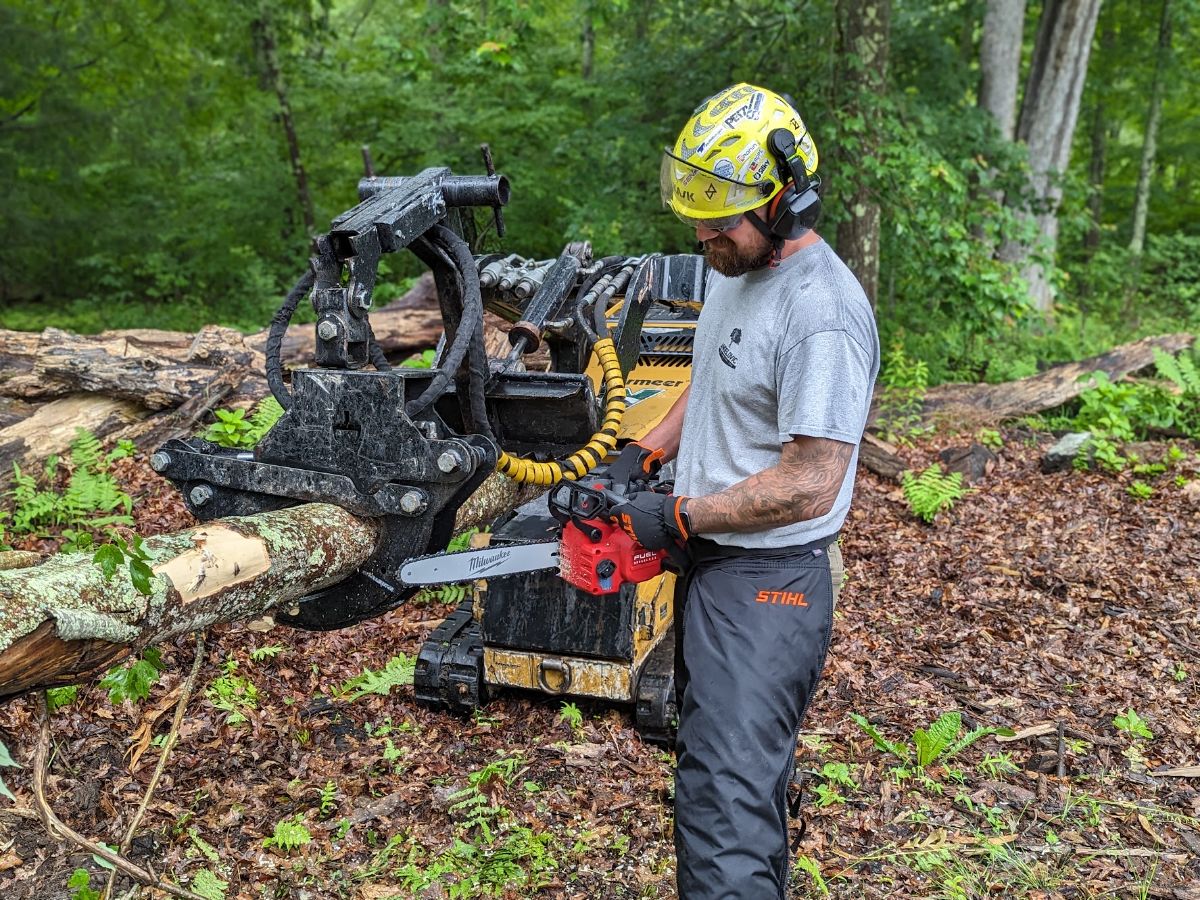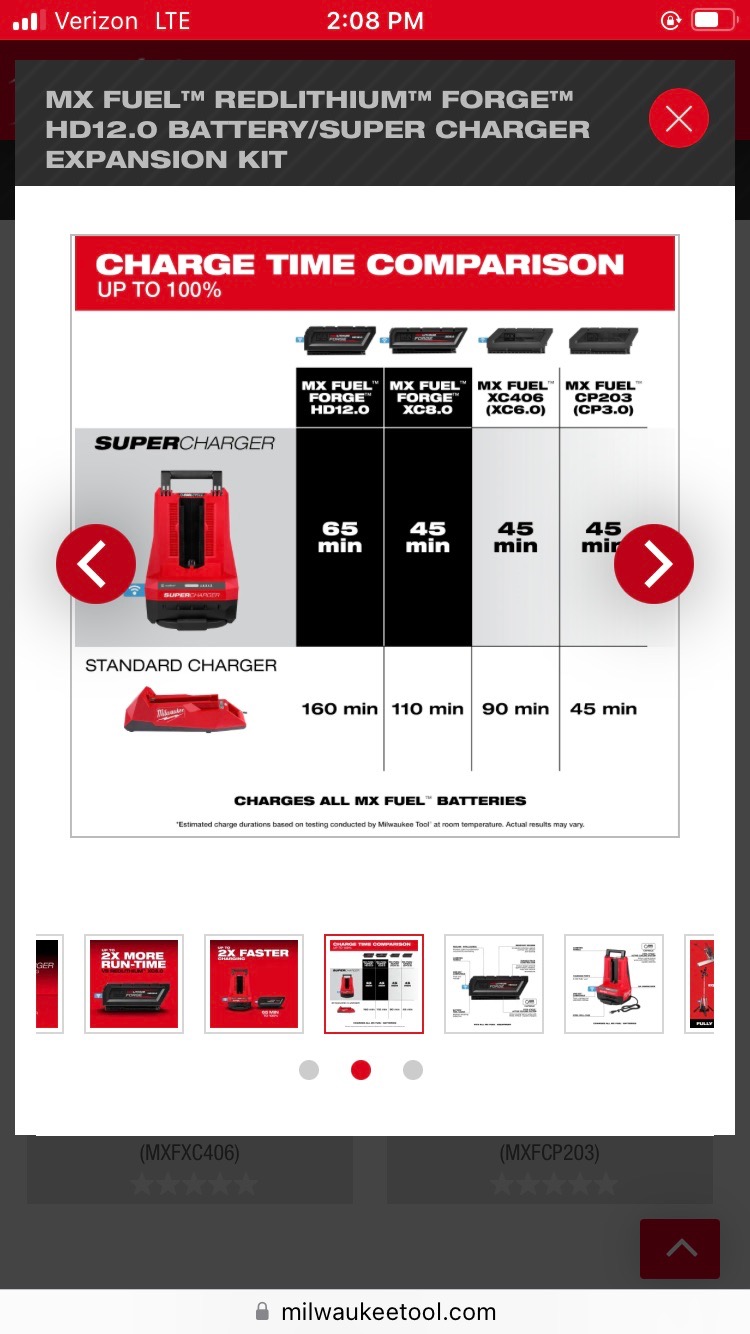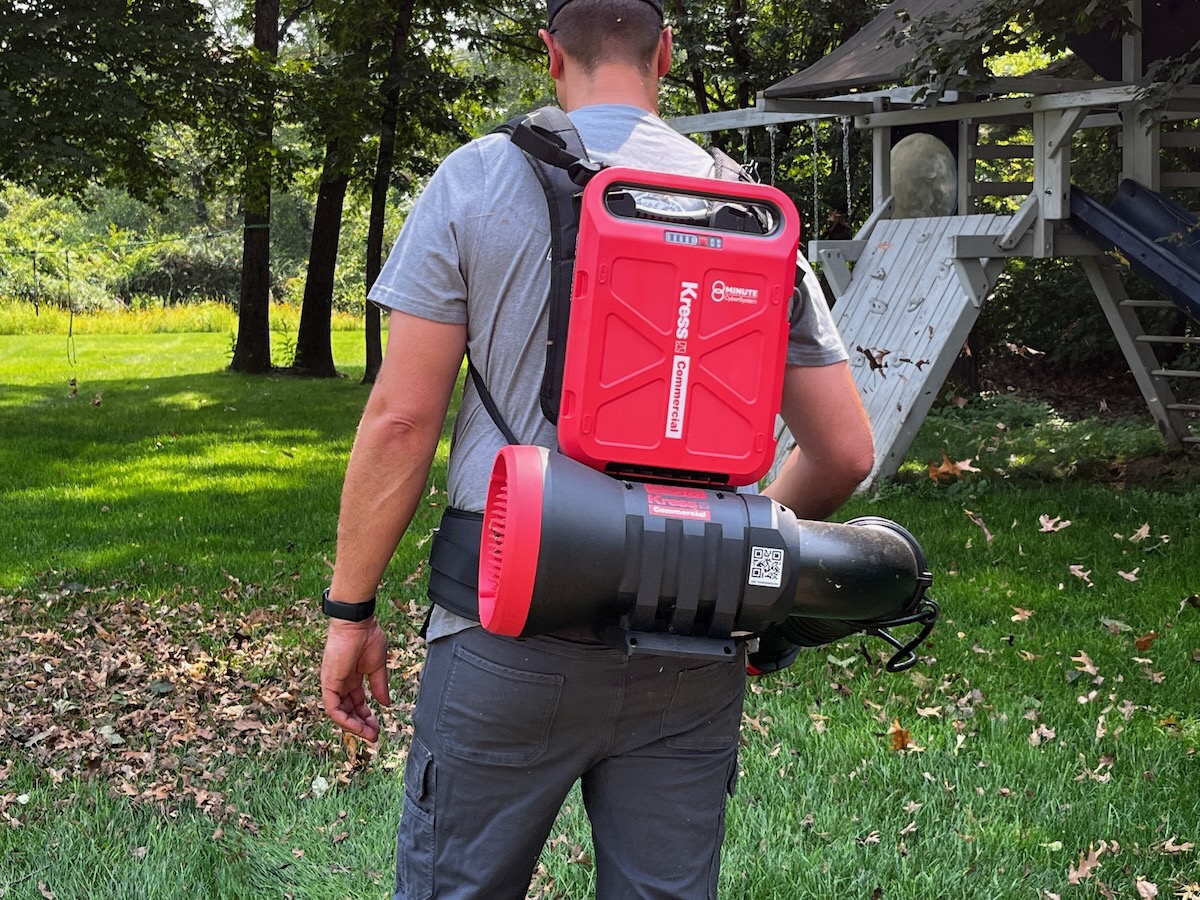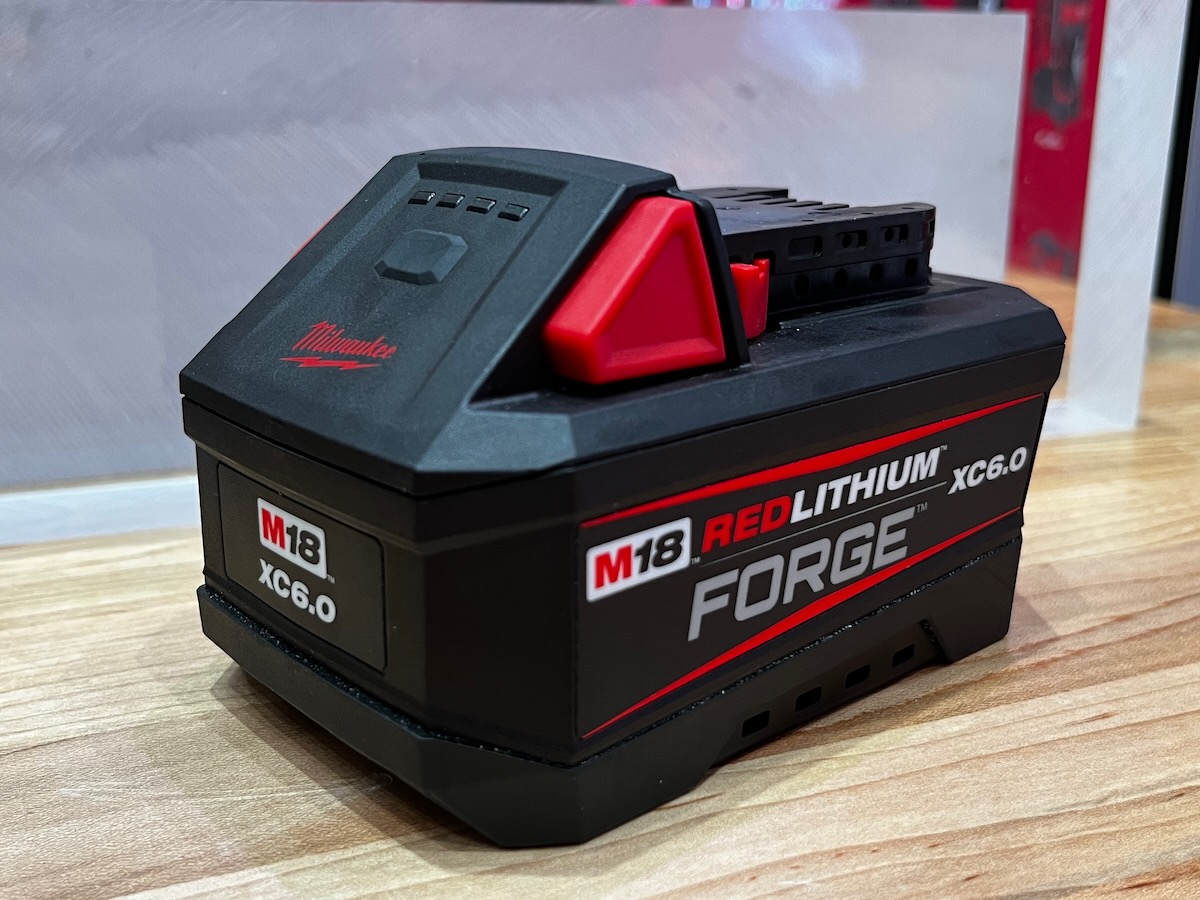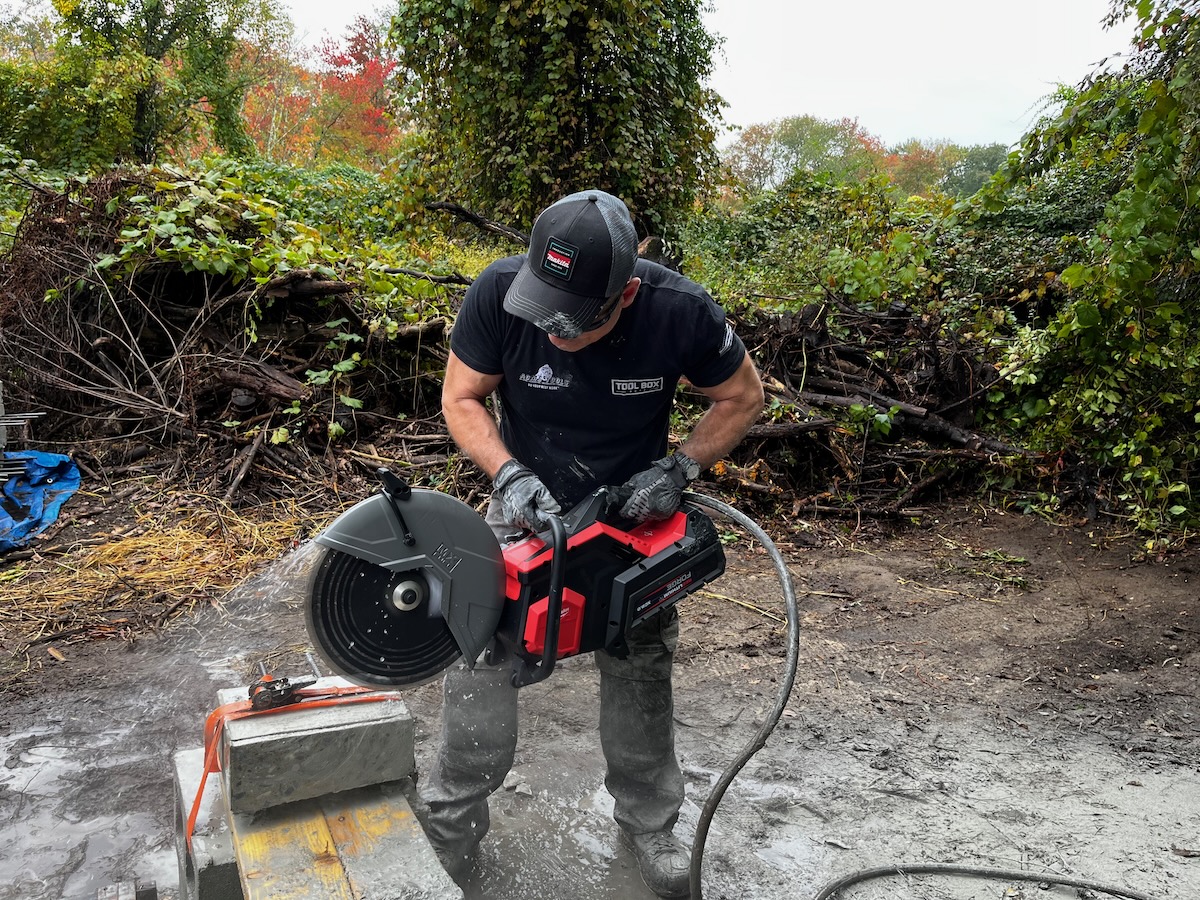Can Cordless Tools Replace Gas Tools?
Gas to Battery Power Equipment Trend
Hey guys, as I was putting the finishing touches on our chainsaw head-to-head video, I was thinking about how far battery technology has come since I started using cordless tools. That stream of thought brought me down a rabbit hole to think about how landscaping industry is now experiencing an increase focus on the integration of battery-operated equipment across the job site. With this shift has come continued development in advanced technology, driving the discussion of gas tools vs. battery-powered tools.
This is an editorial, not a tool review, it’s my hope that I stimulate some conversation and comments about the future of power tools, battery technology and outdoor power equipment.
Performance | Power | Runtime
In order for us to even have this conversation we need to agree battery tools need to match gas in performance, power, and runtime. When I think about performance, power, and runtime we’re now at a time in our lives where cordless tool technology batteries are as powerful as corded or even gas-powered tools.
For example, Milwaukee power tools came in “tops” on our last Top Handle Chainsaw head-to-head. They started launching outdoor power equipment in 2017 and then really started ramping things up in 2021 when they came out with a battery powered mower. Fast forward to 2023 and its clear they’re making a huge push toward OPE with over 2 dozen tools, such as:
1. Several chainsaws – top handle, 14 inch and 16 inches
2. dual battery blower
3. 21-inch self-propelled dual battery mower
4. M18 hatchet 8” pruning saw.
5. Brush cutter
6. String cutter
7. 8” and 18” Hedge Trimmer
8. one- and two-gallons sprayers including a 4-switch tank, gallon backpack sprayer.
9. Quick LOK power head and attachment system, which I personally have and use, and it has a little chainsaw a string trimmer and edger a hedge trimmer and extension pulse. I love it because it is an all-in-one system.
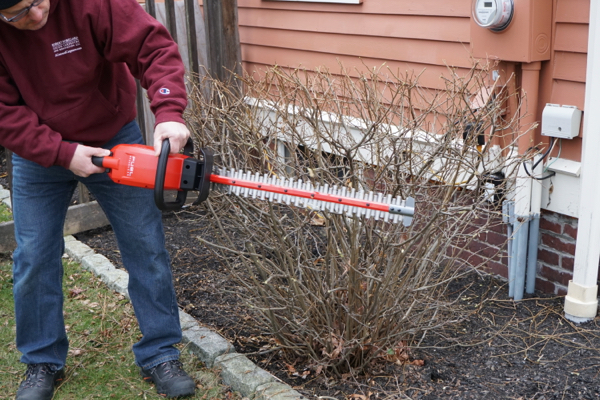 Do you guys see where I’m going here, none of this stuff was available five or six years ago. But here we are with the ability to buy tools that can absolutely cut the cord from electricity and even get work done without gas power.
Do you guys see where I’m going here, none of this stuff was available five or six years ago. But here we are with the ability to buy tools that can absolutely cut the cord from electricity and even get work done without gas power.
Gas To Battery Trends
So, the next question is OK Milwaukee, and all these other power tool companies, are making cordless tools for outdoor power equipment but are they powerful enough for a pro landscaper, or arborist to transition from gas to battery powered equipment in their industry.
We’d be foolish to think the power tool companies are not trying to achieve this. Especially when we see news on the increase in requirements that enforce emission-free and low noise equipment in municipalities, homeowners’ associations, hospitals, resorts, and businesses in efforts to curb air or noise pollution. This trend has encouraged power tool brands to expand their product lineups into the Outdoor Power Equipment space.
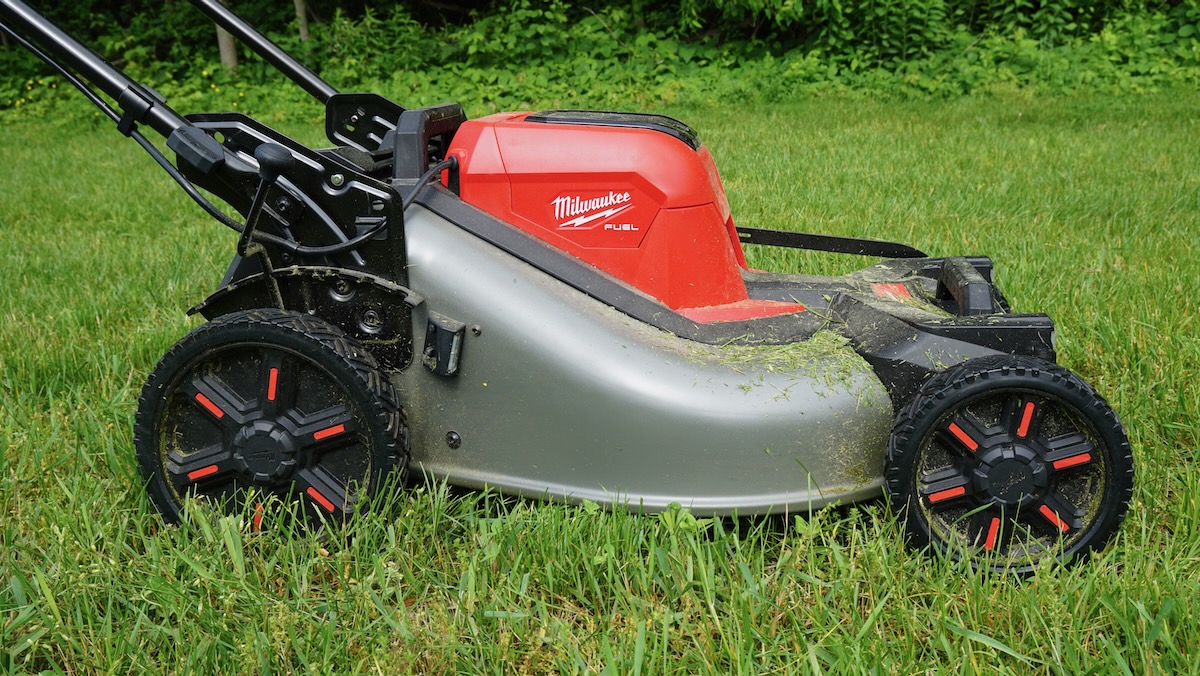 Staying Ahead of the Trend
Staying Ahead of the Trend
As a Pro landscaper looking to stay ahead of this trend you are going to have to explore alternatives to their gas-powered products. Battery-operated equipment is the obvious solution here, as they have already introduced solutions that are fully compliant with these emerging regulations.
Even when operating in non-regulated areas, trends away from gas continue to grow as battery-powered alternatives create substantially less noise output and zero emissions, allowing operators to start work earlier and avoid exposure to fumes. And let’s not forget the popular arguments for using batteries over gas. [less noise, easier to use, less maintenance]
Adopting Battery-Powered Equipment in the Landscaping Industry?
Across the United States, there has been an increase in requirements that enforce emission-free and low noise equipment in municipalities, homeowners’ associations, hospitals, resorts, and businesses in efforts to curb air pollution.
Battery-operated is now powerful enough and offers solutions that are fully compliant with these emerging regulations.
Less noise output and zero emissions are the biggest wins of battery tools. Allowing operators to start work earlier and decrease their exposure to high pollution levels. Additional benefits of gas-free products include the elimination of pull starts, engine maintenance and the mixing of gas and oil.
What do landscapers need to consider before adopting battery-powered equipment?
• Cost
• Power
• Runtime
• Recharging Capabilities
• Same battery Platform
Cost
Probably one of the biggest issues facing professional landscapers and arborists is cost. Investing in battery-powered equipment is expensive, especially if you try to do it all at one time. The ROI is just not there – I think Pros need to slowly integrate battery tools into their arsenal to keep the costs down.
This is one area where I think professional contractors and landscapers need to consider looking at a manufacturer that can offer a single battery platform to get all the work they need done. By investing in a single battery platform with an interchangeable battery system, landscape maintenance companies can save money on long-term tool and gas maintenance.
Cost of Ownership
It’s no secret electric equipment is much more expensive than gas powered tool. This is primarily due to the cost of batteries, but I look at it as comparable to pre-paying for fuel. Yes, there is a higher up-front purchase price, but thats not the only factor. There is also facility infrastructure concerns to ensure charging capacity, and mobile charging.
A Pro landscaper I know recently compared cost of ownership between a gas and battery zero turn mower. He determined that over a 5 year period the battery zt mower was approximately $500 cheaper to operate and took approximately 2500 hours to reach break-even on your investment.
Here are the costs and credits that he used in his side-by-side comparison calculation:
Cost Of Ownership | Cost To Compare:
- Purchase price
- Infrastructure upgrades for charging
- Incentive credits for battery tools
- Loan costs
- Fuel costs
- Costs of repair
- Tax depreciation on infrastructure and tool
- Life of tool
That answered that question, that electricity is definitely cheaper than gas. The biggest drawback for battery tools, is and has always been, runtime and charging.
Recharging Capabilities | The Future Of Charging
This is the biggest hurdle for battery power tool companies. Runtime has always been an issue with cordless tools and in order to get the job done throughout the day you need to have enough batteries to get the work you’re doing done, or you need to be charging throughout the day.
Charging cordless tool batteries is easy if you’re a contractor like me and you’re parked on a job site all day with electricity, but when you’re a mobile contractor like a professional landscaper it’s harder.
To make charging efficient for mobile crews, Pros need to make it happen on-the-go. Meaning they need to take their power with them. Solar charging systems is not as reliable, affordable or efficient enough for mobile vehicles to rely on so most Pros either need to look at inverters or large battery storage chargers.
Many Pros already utilize battery inverters, and these units cost around $1.00 per watt to operate chargers in the field.
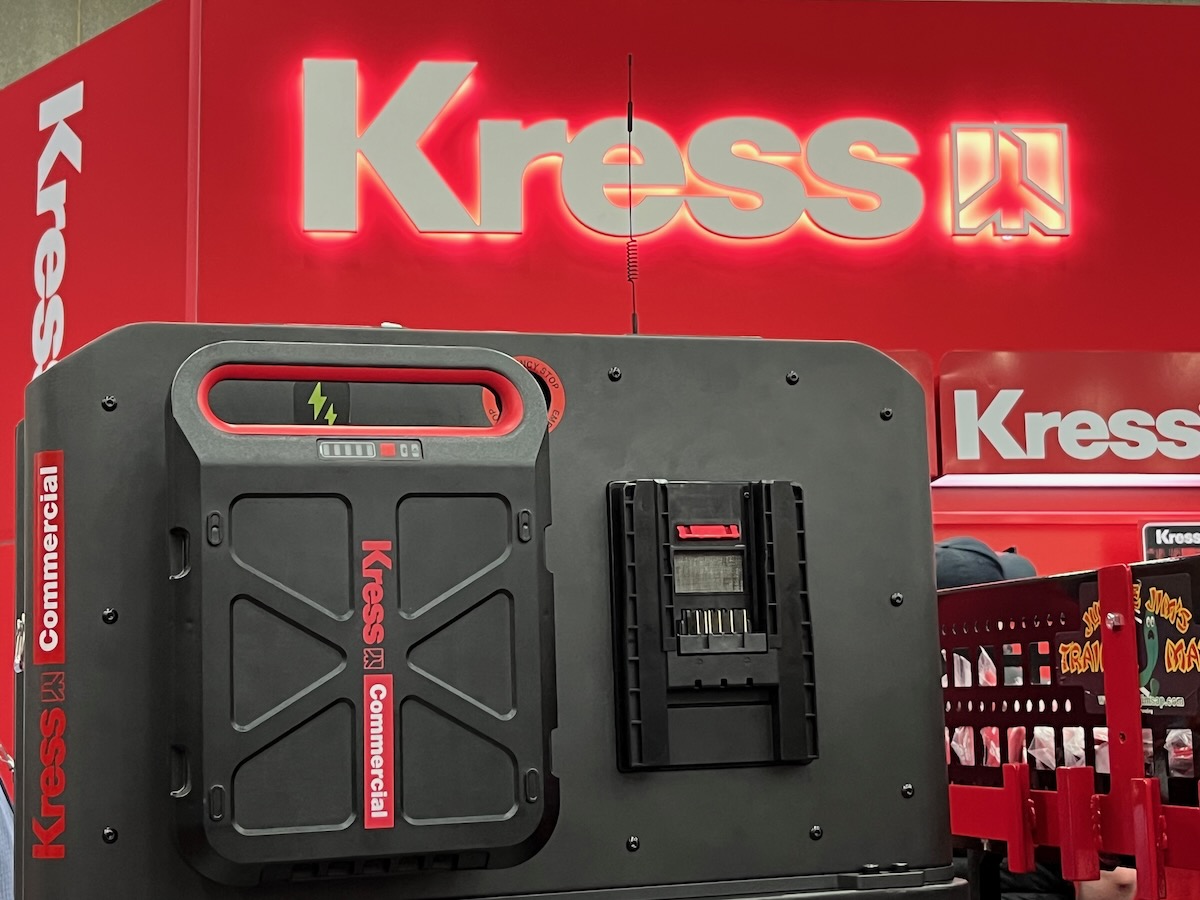
I think the next evolution will be battery storage systems. This is where the next big innovation in cordless tools for outdoor power equipment will come from. Tool companies will be looking at solutions to charge batteries on the go. Some companies, like KRESS with their Cyber tank system, are already doing it, and its pricy.
Tool companies will need to offer large battery storage systems that are capable of recharging multiple batteries on the go throughout the day. These units will be big, heavy, and most likely mounted in trailers and trucks. These units will need to be robust, waterproof, inverter capable, have GPS location in case it’s stolen and be able to recharge batteries fast.
When I say fast, I mean 10-15 minutes fast, for example as a landscaper you should be able to charge your batteries between one lawn and the next lawn.
Think about recharging electric cars, it’s the same principle. These battery systems will be designed to charge at night off your 110 voltage and Pros will then use that larger battery to charge smaller batteries, DC to DC fast charging during the day.
Better Batteries | Longer Lifespan
For this to be a viable solution, tool companies are going to need to re-think their battery re-charging cycle life. In this scenario landscape Pros will be discharging batteries fast and need to recharge them fast. Batteries cycles will add up fast, and for this to be successful battery longevity needs to last longer. To do this they’re going to have to increase their recharge cycles to at least 3000 or more for pro users.
Same Platform | All Tools On One Battery
Same battery platform tools are appealing to contractors. There’s a ton of OPE companies like Greenworks, Toro and EGO doing this, and many power tool companies like Dewalt, Makita and Milwaukee are doing this.
Milwaukee for example, has over 250 tools on their M18 battery system and 125 on the M12 system. By purchasing tools from a single brand with an interchangeable battery system, businesses can maximize runtime and versatility in operation to increase efficiency in application. For users in the Milwaukee M18 battery system, this provides compatibility between outdoor products as well as common power tools.
In considering the shift away from traditional gas solutions, landscapers must consider the versatility, efficiency, and power provided by battery-powered technology as to best maximize their long-term investments.
Benefits of Battery over Gas
The benefits of a battery too over gas tool are:
- Reduced noise levels: benefit property owners while landscapers work around their homes and buildings.
- Ease of use; the elimination of pull starting, and priming engines. Battery-powered equipment eliminates the time it takes to start a gas engine with a simple push-button start. But that’s not it either, what about dealing with starting engines in cold climates, and mixing of gas and oil. Battery-powered equipment has no exhaust systems, so users do not have to deal with emissions blowing into their face or heat build-up on exhaust pipes, both commonly noted frustrations.
- Less Maintenance: Gas equipment required you to have to deal with dirty air filters, spark plugs, snapped recoil starters, and clogged or dirty carburetors, while battery-operated equipment requires no engine maintenance.
What to Consider Before Adopting Battery-Powered Equipment
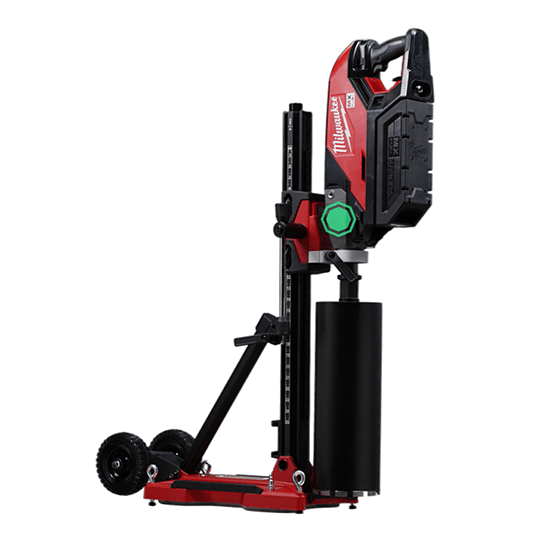 Conclusion
Conclusion
I think the benefits of cordless technology for outdoor power equipment is obvious, but it still comes down to runtime and power. Can these tools provide the power needed to get the job done, with enough runtime to when the professional landscaper arborist over? I believe they can, but I think recharging and unfitting cost will be their biggest hurdles.
The growing innovation with outdoor power tools, battery-powered technology will allow battery-powered equipment to outperform traditional gas solutions and meet the needs of the professional.
As landscape maintenance companies look to make equipment purchasing decisions, they should consider adopting a long-term plan to slowly adopt battery-operated technology.
About the author
Disclosure
Product reviews on this site contain our opinion of a product or service. We will always strive for objectivity and transparency in our reviews. Our goal is to provide readers with honest, objective information based on our own experiences. We never have and never will accept payment in exchange for a positive review. Many of the products that we review are provided to us for free by a manufacturer or retailer. In some cases, we also have advertising or affiliate relationships with manufacturers and retailers of products and services we review. For additional information please visit our additional disclosure policies.











